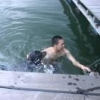-
Topics
-
Latest Update
-
0
대구모텔커피배달↗텔-레@msj36↗대구다방콜걸만남①대구외국인다방추천①
대구모텔커피배달↗텔-레@msj36↗대구다방콜걸만남①대구외국인다방추천① 대구모텔커피배달↗텔-레@msj36↗대구다방콜걸만남①대구외국인다방추천① -
0
哪里可以购买中央昆士兰大学毕业证Q微信457202606澳洲CQU毕业证硕士毕业证成绩单修改GPA分数 Central Queensland University
哪里可以购买中央昆士兰大学毕业证Q微信457202606澳洲CQU毕业证硕士毕业证成绩单修改GPA分数 Central Queensland University Q/微457202606办理国外大学毕业证成绩单,大使馆认证教育部学历学位认证★诚招代理★ 实体公司,注册经营,行业标杆,精益求精! 十年老牌公司,成功案例近万,诚信第一,一手价格,物超所值! 咨询顾问:karl QQ/微信:457202606 咨询:办理毕业证成绩单、教育部学历认证、学历文凭、使馆认证/留学回国人员证明、录取通知书、Offer、在读证明、雅思托福成 绩单、网上存档永久可查! 为英国、加拿大、澳洲、新西兰、美国、法国、德国、新加坡等国留学生提供 以下服务(接受面谈): ★真实教育部认证,教育部存档,中国教育部留学服务中心认证(即教育部留服认证)网站 100%可查. ★真实使馆认证(即留学人员回国证明),使馆存档可通过大使馆查询确认. ★留信网认证,国家专业人才认证中心颁发入库证书,留信网永久存档可查. ★毕业证、成绩单等全套材料,从防伪到印刷,从水印到钢印烫金,高精仿度跟学校原版100%相同. 如果您是以下情况,我们都能竭诚为您解决实际问题: 1、在校期间,因各种原因未能顺利毕业,拿不到官方毕业证; 2、面对父母的压力,希望尽快拿到; 3、不清楚流程以及材料该如何准备; 4、回国时间很长,忘记办理; 5、回国马上就要找工作,办给用人单位看; 6、企事业单位必须要求办理的; 7、挂科了,无法正常毕业。 ◆为什么您的学位需要到使馆进行公证? 使馆教育处开具的《留学回国人员证明》是留学人员在国内证明留学身份、联系工作、创办 企业、落转户口、申请国内各类基金等必备的材料。留学人员持有此证明还可以享受购买国 产汽车免税等多项优惠政策。 ◆为什么您的学位需要在国内进一步认证? 如果您计划在国内发展,那么办理国内教育部认证是必不可少的。一般企业用人单位在您 应聘时都会需要您提供这个认证。办理教育部认证所需资料众多且烦琐,所有材料您都必须 提供原件,我们凭借丰富的经验,帮您快速整合材料,让您少走弯路。 专业服务,请勿犹豫联系我! 本公司是留学创业和海归创业者们的桥梁。一次办理,终生受用,一步到位,高效服务。详情请在线咨询办理,欢迎有诚意办理的客户咨询洽谈! ◆招聘代理:本公司诚聘英国、加拿大、澳洲、新西兰、美国、法国、德国、新加坡各地代理人员,如果你有业余时间,有兴趣就请联系我们◆/// 校园代理,报酬丰厚。真诚期待您的加盟。24小时为您服务 专业服务,使命必赴! 诚招代理:本公司诚聘当地代理人员,如果你有业余时间,或者你有同学朋友需要办理,或者你想帮助他们,有兴趣就请联系我 -QQ/微信:457202606 你赢我赢,共创双赢 你做代理,可以帮助同学朋友 你做代理,可以挽救一个人才 你做代理,你将是别人人生的转折点 你做代理,可以改变自己,改变他人,给他人和自己一个机会 远洋教育留学服务中心:实体公司,注册经营,行业标杆,精益求精!我们以质量求生存,可面谈,是真是假,眼见为实,让您真正放心,平凡人生,尽我所能助您一臂之力让我们携手圆您梦想! -
4
-
0
哪里可以购买悉尼科技大学毕业证Q微信457202606澳洲UTS毕业证硕士毕业证成绩单修改GPA分数University of Technology Sydney
哪里可以购买悉尼科技大学毕业证Q微信457202606澳洲UTS毕业证硕士毕业证成绩单修改GPA分数University of Technology Sydney Q/微457202606办理国外大学毕业证成绩单,大使馆认证教育部学历学位认证★诚招代理★ 实体公司,注册经营,行业标杆,精益求精! 十年老牌公司,成功案例近万,诚信第一,一手价格,物超所值! 咨询顾问:karl QQ/微信:457202606 咨询:办理毕业证成绩单、教育部学历认证、学历文凭、使馆认证/留学回国人员证明、录取通知书、Offer、在读证明、雅思托福成 绩单、网上存档永久可查! 为英国、加拿大、澳洲、新西兰、美国、法国、德国、新加坡等国留学生提供 以下服务(接受面谈): ★真实教育部认证,教育部存档,中国教育部留学服务中心认证(即教育部留服认证)网站 100%可查. ★真实使馆认证(即留学人员回国证明),使馆存档可通过大使馆查询确认. ★留信网认证,国家专业人才认证中心颁发入库证书,留信网永久存档可查. ★毕业证、成绩单等全套材料,从防伪到印刷,从水印到钢印烫金,高精仿度跟学校原版100%相同. 如果您是以下情况,我们都能竭诚为您解决实际问题: 1、在校期间,因各种原因未能顺利毕业,拿不到官方毕业证; 2、面对父母的压力,希望尽快拿到; 3、不清楚流程以及材料该如何准备; 4、回国时间很长,忘记办理; 5、回国马上就要找工作,办给用人单位看; 6、企事业单位必须要求办理的; 7、挂科了,无法正常毕业。 ◆为什么您的学位需要到使馆进行公证? 使馆教育处开具的《留学回国人员证明》是留学人员在国内证明留学身份、联系工作、创办 企业、落转户口、申请国内各类基金等必备的材料。留学人员持有此证明还可以享受购买国 产汽车免税等多项优惠政策。 ◆为什么您的学位需要在国内进一步认证? 如果您计划在国内发展,那么办理国内教育部认证是必不可少的。一般企业用人单位在您 应聘时都会需要您提供这个认证。办理教育部认证所需资料众多且烦琐,所有材料您都必须 提供原件,我们凭借丰富的经验,帮您快速整合材料,让您少走弯路。 专业服务,请勿犹豫联系我! 本公司是留学创业和海归创业者们的桥梁。一次办理,终生受用,一步到位,高效服务。详情请在线咨询办理,欢迎有诚意办理的客户咨询洽谈! ◆招聘代理:本公司诚聘英国、加拿大、澳洲、新西兰、美国、法国、德国、新加坡各地代理人员,如果你有业余时间,有兴趣就请联系我们◆/// 校园代理,报酬丰厚。真诚期待您的加盟。24小时为您服务 专业服务,使命必赴! 诚招代理:本公司诚聘当地代理人员,如果你有业余时间,或者你有同学朋友需要办理,或者你想帮助他们,有兴趣就请联系我 -QQ/微信:457202606 你赢我赢,共创双赢 你做代理,可以帮助同学朋友 你做代理,可以挽救一个人才 你做代理,你将是别人人生的转折点 你做代理,可以改变自己,改变他人,给他人和自己一个机会 远洋教育留学服务中心:实体公司,注册经营,行业标杆,精益求精!我们以质量求生存,可面谈,是真是假,眼见为实,让您真正放心,平凡人生,尽我所能助您一臂之力让我们携手圆您梦想! -
0
哪里可以购买莫纳什大学毕业证Q微信457202606澳洲Monash毕业证硕士毕业证成绩单修改GPA分数Monash University
哪里可以购买莫纳什大学毕业证Q微信457202606澳洲Monash毕业证硕士毕业证成绩单修改GPA分数Monash University Q/微457202606办理国外大学毕业证成绩单,大使馆认证教育部学历学位认证★诚招代理★ 实体公司,注册经营,行业标杆,精益求精! 十年老牌公司,成功案例近万,诚信第一,一手价格,物超所值! 咨询顾问:karl QQ/微信:457202606 咨询:办理毕业证成绩单、教育部学历认证、学历文凭、使馆认证/留学回国人员证明、录取通知书、Offer、在读证明、雅思托福成 绩单、网上存档永久可查! 为英国、加拿大、澳洲、新西兰、美国、法国、德国、新加坡等国留学生提供 以下服务(接受面谈): ★真实教育部认证,教育部存档,中国教育部留学服务中心认证(即教育部留服认证)网站 100%可查. ★真实使馆认证(即留学人员回国证明),使馆存档可通过大使馆查询确认. ★留信网认证,国家专业人才认证中心颁发入库证书,留信网永久存档可查. ★毕业证、成绩单等全套材料,从防伪到印刷,从水印到钢印烫金,高精仿度跟学校原版100%相同. 如果您是以下情况,我们都能竭诚为您解决实际问题: 1、在校期间,因各种原因未能顺利毕业,拿不到官方毕业证; 2、面对父母的压力,希望尽快拿到; 3、不清楚流程以及材料该如何准备; 4、回国时间很长,忘记办理; 5、回国马上就要找工作,办给用人单位看; 6、企事业单位必须要求办理的; 7、挂科了,无法正常毕业。 ◆为什么您的学位需要到使馆进行公证? 使馆教育处开具的《留学回国人员证明》是留学人员在国内证明留学身份、联系工作、创办 企业、落转户口、申请国内各类基金等必备的材料。留学人员持有此证明还可以享受购买国 产汽车免税等多项优惠政策。 ◆为什么您的学位需要在国内进一步认证? 如果您计划在国内发展,那么办理国内教育部认证是必不可少的。一般企业用人单位在您 应聘时都会需要您提供这个认证。办理教育部认证所需资料众多且烦琐,所有材料您都必须 提供原件,我们凭借丰富的经验,帮您快速整合材料,让您少走弯路。 专业服务,请勿犹豫联系我! 本公司是留学创业和海归创业者们的桥梁。一次办理,终生受用,一步到位,高效服务。详情请在线咨询办理,欢迎有诚意办理的客户咨询洽谈! ◆招聘代理:本公司诚聘英国、加拿大、澳洲、新西兰、美国、法国、德国、新加坡各地代理人员,如果你有业余时间,有兴趣就请联系我们◆/// 校园代理,报酬丰厚。真诚期待您的加盟。24小时为您服务 专业服务,使命必赴! 诚招代理:本公司诚聘当地代理人员,如果你有业余时间,或者你有同学朋友需要办理,或者你想帮助他们,有兴趣就请联系我 -QQ/微信:457202606 你赢我赢,共创双赢 你做代理,可以帮助同学朋友 你做代理,可以挽救一个人才 你做代理,你将是别人人生的转折点 你做代理,可以改变自己,改变他人,给他人和自己一个机会 远洋教育留学服务中心:实体公司,注册经营,行业标杆,精益求精!我们以质量求生存,可面谈,是真是假,眼见为实,让您真正放心,平凡人生,尽我所能助您一臂之力让我们携手圆您梦想!
-





Recommended Posts
Join the conversation
You can post now and register later. If you have an account, sign in now to post with your account.